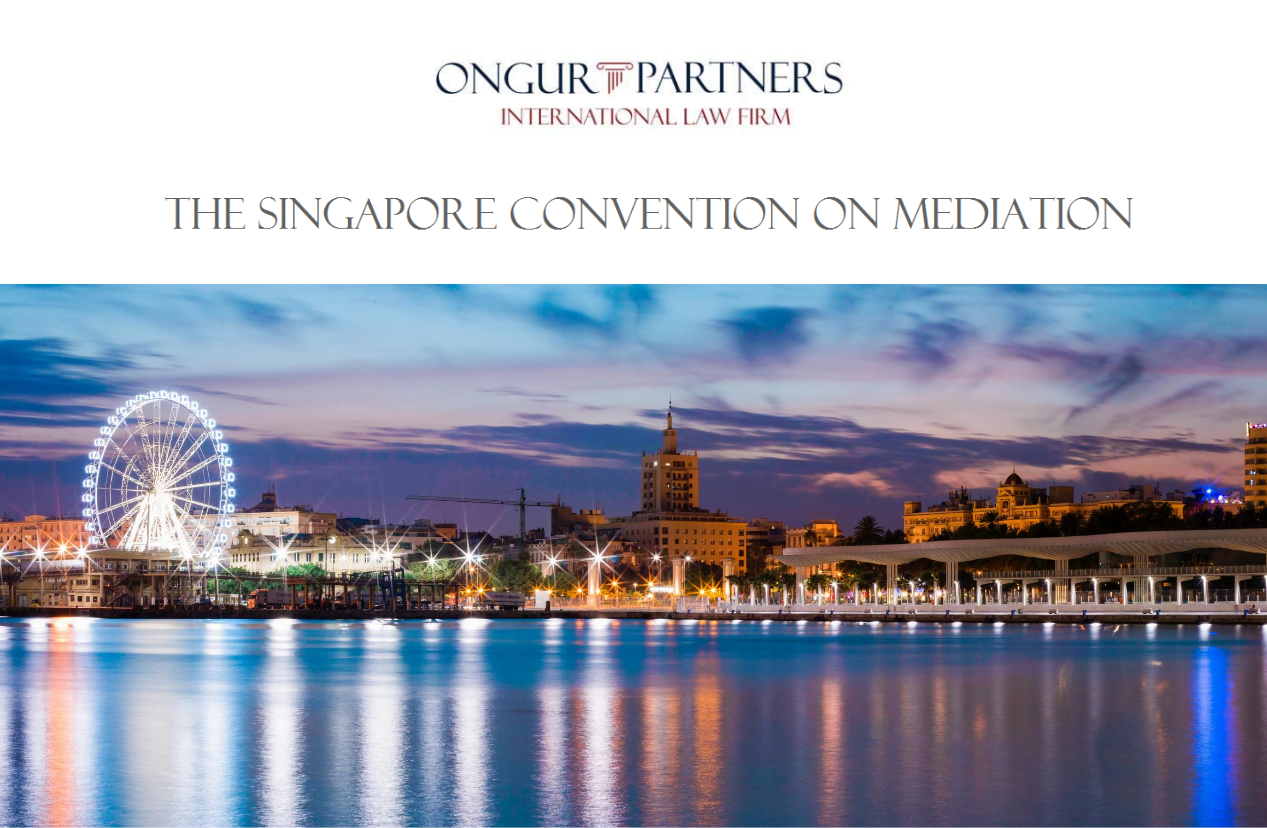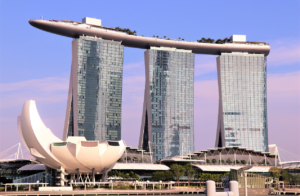Introduction
The United Nations (UN) Convention on International Settlement Agreements Resulting from Mediation (The Singapore Convention on Mediation)1 was finally signed by 46 States on 7 August 20192, following its approval by the United Nations Commission on International Trade Law (UNCITRAL) in June 20183 and adoption by the UN General Assembly in December 20184. The signatories of the Singapore Convention include the two largest economies, the US and China and many of the largest economies in Asia, such as India and South Korea, as well as Turkey5.
Recognizing mediation’s rising profile as a method for settling international commercial disputes and the significant benefits that mediation provides6, the Singapore Convention on Mediation establishes a framework for the enforcement of international settlement agreements resulting from mediation, akin to the international regime implemented by the 1958 United Nations Convention on the Recognition and Enforcement of Foreign Arbitral Awards (New York Convention)7. The high number and calibre of signatories are deemed to be very promising for the Convention’s future success, as it surpasses the 10 countries who had initially signed the New York Convention when it was opened for signature in 19588.
A Big Boost For Mediation
Mediation provides significant benefits in comparison to arbitration and litigation in resolving commercial disputes. It is cheaper, provides workable solutions in a less adversarial setting and thereby helps preserve on-going commercial relationships. As a result, enforcement issues normally do not arise. Indeed, voluntarily negotiated settlement agreements reached through the help of a neutral mediator are usually honoured by their parties. They also tend to last longer as the parties are likely to comply more easily with solutions, they themselves have developed9.
Significant benefits aside, the caveat that is often put forward as a barrier to the use of mediation in cross-border commercial disputes is the lack of an efficient and harmonized framework for the enforcement of settlement agreements in the event that one party to the agreement fails to honour its terms10.
The risk is that unless the settlement agreement is enshrined in a court decision or an arbitral decision in the form of a consent order, the party wishing to enforce the terms of the settlement against the breaching party has to rely on the breach of contract provisions before national courts, only to have the ensuing court decision recognized and enforced usually before the counterparty’s national court. This involves costly and lengthy proceedings, which defeats the purpose of resorting to mediation in the first place.
The Singapore Convention, already hailed as “the New York Convention for mediation”11 and a “game-changer”12 for cross-border mediation, significantly reduces this off-putting risk and renders the amicable resolution of cross-border disputes by way of mediation a viable alternative to litigation and arbitration.
Scope of Application And Key Provisions
Once ratified by three countries13, the Singapore Convention on Mediation will apply to international settlement agreements resulting from mediation and concluded in writing to resolve disputes of a commercial nature14 and oblige States that are parties to the Convention to enforce them under the conditions laid down in the Convention15. The Convention also allows reliance on such settlement agreements in the event that a dispute arises concerning a matter that a party claims was already resolved by the settlement agreement in question16. In short, the Convention can be relied on both as a sword and a shield17.
According to the Convention, the “competent authorities” of the State parties (i.e. the national courts) are barred from conducting a substantive review of the settlement agreements before them. In a language reminiscent of the New York Convention, Article 5 of the Singapore Convention provides that national courts can only refuse to enforce them based on narrowly set out grounds. The grounds for refusal that can be invoked by the parties to the agreement are:
- the parties’ incapacity18;
- the settlement agreement’s being null and void, incapable of being performed under the law it is subjected to19, or not final or binding20,
- the settlement agreement’s subsequent modification21,
- the prior performance of the obligations in the settlement agreement22,
- the obligations being unclear or incomprehensible23,
- the parties’ having opted-out of the application of the Convention24
- the mediator’s serious breach of standards applicable to the mediator or the mediation25, or the mediator’s failure to disclose circumstances touching upon the mediator’s impartiality or independence, without which a party would not have entered into the settlement agreement26.
The grounds that focus on the conduct of the mediator raise questions as to how they will be applied in practice. The concern is that, given the absence of any universally accepted mediation process, these grounds may easily open the door to resisting enforcement by the parties27. This concern may be countered by the fact that the standard of proof is kept fairly high28.
The party invoking these grounds not only has to prove the mediator’s serious egregious behaviour under the rules and codes of conduct applicable to the mediator and the mediation but also that it would not enter into the settlement agreement absent that behaviour, i.e. establishes the causal link between the two. In view of this provision’s importance in the implementation of the Convention, it is also safe to assume that the standards applicable to mediators and mediation will be increasingly clarified by mediation institutions around the world, in the form of guidelines, in order to provide more certainty to their users.
The Convention includes two additional grounds upon which the court may, on its own motion, refuse enforcement:
- Granting relief would be contrary to the public policy of that country29;
- The subject matter of the dispute is not capable of settlement by mediation under the laws of that State party30,
thereby following in the footsteps of the New York Convention.
One issue that may potentially hinder the Convention’s comprehensive application is the reservations that are permitted under the Convention. Article 8(1)(a) of the Singapore Convention allows for ratifying States to make a reservation that the Convention will apply only to the extent that the parties to the settlement agreement have specifically agreed to apply it (opt-in). It is foreseeable that this might give rise to disagreements between the parties whether to opt-in to the Convention or not, in cases where one party belongs to a State that has made the reservation and the other to one that has not.
More generally, giving such discretion to the parties of the settlement agreements might risk that the Convention will not be applied in a harmonized and uniform fashion, contrary to its declared objective to “contribute significantly to the establishment of a harmonized legal framework for the fair and efficient settlement of disputes arising in international commercial relations”31 “. In view of this, it is important to be mindful of which countries will make use of this opt-in reservation and draft settlement terms accordingly32.
Under the second reservation allowed under the Convention, a State party may also declare that the Convention does not apply to itself or any government agencies33. This may discourage investor-State disputes’ amicable resolution by way of mediation, depriving both investors and States of the opportunity of an early and mutually beneficial resolution of commercial matters without escalating to an investment dispute34. Still, as things currently stand, only two out of forty-six signatories, Belarus and Iran, made use of this provision under Article 835. Provided that more States do not exclude themselves from the application of the Convention, one can expect to increasingly see the commercial aspects of investor-State disputes being brought under the Singapore Convention.
Conclusion
The Singapore Convention on Mediation is a significant contribution to the development of the international commercial dispute resolution system. It certainly gives one more reason to parties to a cross-border relationship to consider mediation in resolving their differences. The ultimate success of the Singapore Convention will naturally depend on its endorsement by States, but given the record-breaking number of the first-day signatories and the enthusiasm with which the Convention is received by the dispute resolution community, the future of mediation seems bright.
As for Turkey, one of the first-day signatories, the Singapore Convention is no doubt a very welcome development, in view of her experience and impressive success in the mediation of commercial matters. As a very dynamic Turkish mediation community is ready to share its competence with the world, Turkey must seize the opportunity and establish Turkey’s role as a mediation hub.
Av. Arzu ONGUR – Av.Dr. Selva KORKMAZCAN
1 https://uncitral.un.org/en/texts/mediation/conventions/international_settlement_agreements, accessed: 22.8.2019.
2 Cara Wong, “46 countries sign international mediation treaty named after Singapore”, Straits Times, August 7, 2019, https://www.straitstimes.com/singapore/key-facts-about-the-singapore-convention-on-mediation, accessed: 22.8.2019.
3 Report of the United Nations Commission on International Trade Law, Fifty-first session (25 June-13 July 2018), https://www.uncitral.org/pdf/english/commissionsessions/51st-session/Final_Edited_version_in_English_28-8-2018.pdf, accessed: 23.8.2019.
4 https://uncitral.un.org/en/news/general-assembly-adopts-united-nations-convention-international-settlement-agreements-resulting, accessed: 22.8.2019.
5 For the full list of signatories, see: https://treaties.un.org/pages/ViewDetails.aspx?src=TREATY&mtdsg_no=XXII-4&chapter=22&clang=_en, accessed: 23.8.2019.
6 Preamble to the Singapore Convention on Mediation.
7 https://www.uncitral.org/pdf/english/texts/arbitration/NY-conv/New-York-Convention-E.pdf.
8 Sapna Jhangiani, Bryan Looy, “The Singapore Convention on Mediation – A Commitment to Multilateralism”, August 20, 2019, https://www.clydeco.com/insight/article/the-singapore-convention-on-mediation, accessed: 22.8.2019.
9 Christian Bühring-Uhle, Lars Kirchoff, Matthias Scherer, Arbitration and Mediation in International Business, Second Revised Edition, Kluwer Law International [2006], p. 166.
10 https://uncitral.un.org/en/news/general-assembly-adopts-united-nations-convention-international-settlement-agreements-resulting, accessed: 22.8.2019.
11 Singapore International Mediation Centre, “The Singapore Convention: A Milestone in Mediation”, July 25, 2018, http://simc.com.sg/blog/2018/07/25/singapore-convention-milestone-mediation/, accessed: 22.8.2019; Jan O’Neill, “The new Singapore Convention: will it be the New York Convention for Mediation?”, 19 November 2018, http://disputeresolutionblog.practicallaw.com/the-new-singapore-convention-will-it-be-the-new-york-convention-for-mediation/, accessed: 22.8.2019.
12 Michael Cross, “Singapore Convention a ‘game changer’ for cross-border mediation”, 5 August 2019, https://www.lawgazette.co.uk/news/singapore-convention-a-game-changer-for-cross-border-mediation/5071243.article, accessed: 23.8.2019.
13 Article 14 of the Singapore Convention on Mediation.
14 Article 1 of the Singapore Convention on Mediation.
15 Article 3(1) of the Singapore Convention on Mediation.
16 Article 3(2) of the Singapore Convention on Mediation.
17 Jan O’Neill, “46 countries sign the new Singapore Convention on mediated settlements”, 7 August 2019, https://hsfnotes.com/adr/2019/08/07/46-countries-sign-the-new-singapore-convention-on-mediated-settlements/, accessed: 22.8.2019.
18 Article 5(1)(a) of the Singapore Convention on Mediation.
19 Article 5(1)(b)(i) of the Singapore Convention on Mediation.
20 Article 5(1)(b)(ii) of the Singapore Convention on Mediation.
21 Article 5(1)(b)(iii) of the Singapore Convention on Mediation.
22 Article 5(1)(c)(i) of the Singapore Convention on Mediation.
23 Article 5(1)(c)(ii) of the Singapore Convention on Mediation.
24 Article 5(1)(d) of the Singapore Convention on Mediation.
25 Article 5(1)(e) of the Singapore Convention on Mediation.
26 Article 5(1)(f) of the Singapore Convention on Mediation.
27 Jhangiani, Looy, “The Singapore Convention on Mediation – A Commitment to Multilateralism”.
28 Rob Palmer, Georgia Quick, Cathryn Neo, Ed Davies, “The Singapore Convention on Mediation: Doing for Mediation What the New York Convention Has Done for Arbitration?”, Ashurst Dispute Resolution Update, 7 August 2019, https://www.ashurst.com/en/news-and-insights/legal-updates/the-singapore-convention-on-mediation/, accessed: 23.8.2019.
29 Article 5(2)(a) of the Singapore Convention on Mediation.
30 Article 5(2)(b) of the Singapore Convention on Mediation.
31 UN General Assembly Resolution 73/198, 20 December 2018, https://uncitral.un.org/sites/uncitral.un.org/files/media-documents/EN/Texts/UNCITRAL/Arbitration/mediation_convention_v1900316_eng.pdf, accessed: 24.8.2019.
32 Jhangiani, Looy, “The Singapore Convention on Mediation – A Commitment to Multilateralism”.
33 Article 8(1)(b) of the Singapore Convention on Mediation.
34 Mushegh Manukyan, “Singpore Convention Series: A Call for a Broad Interpretation of the Singapore Mediation Convention in the context of Investor-State Disputes”, June 10,2019, http://mediationblog.kluwerarbitration.com/2019/06/10/singapore-convention-series-a-call-for-a-broad-interpretation-of-the-singapore-mediation-convention-in-the-context-of-investor-state-disputes/, accessed: 23.8.2019.
35 Declarations and Reservations, https://treaties.un.org/pages/ViewDetails.aspx?src=TREATY&mtdsg_no=XXII-4&chapter=22&clang=_en, accessed: 23.8.2019.



